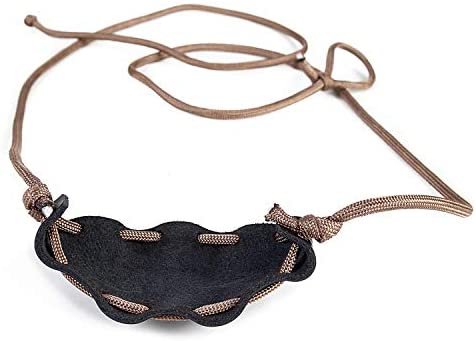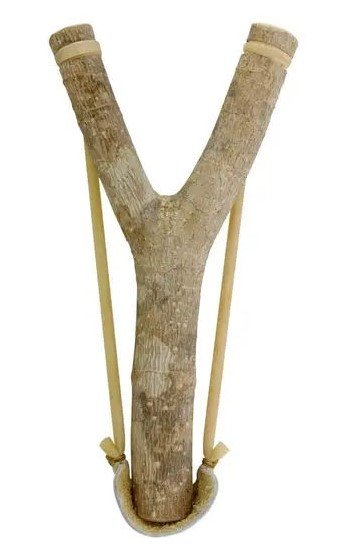-
Posts
6,862 -
Joined
-
Last visited
-
Days Won
167
Content Type
Profiles
Forums
Gallery
Events
Store
Everything posted by saddlebum
-
Hate to say it but I am going to toss this into the mix because it does have some validity as a possibility, but as the engine warms up valve clearance gets tighter as the heat causes expansion. So if your clearances are too tight to start with than as the engine heats up the valves will not close properly in time this can cause valve damage. I realize of all the suggestions above,all of which are very valid, this is the least likely and I would prefer to be wrong but its not impossible. It may not be a bad idea to recheck your valve clearances. Doing this may also help detect a valve that may be starting to recede into the head. Sounds nasty and it is if you do find a faulty valve but on the other hand if all you find is the tolerances are too tight you may get away with just changing shims (you will need to buy or borrow a shim kit for this). Checking and re-setting valve clearances is a lot less work than removing and overhauling the carbs. Roughly two to three hours work if its your 1st time doing this. If your careful removing the valve covers and don't damage the gaskets, you can reuse them if they are still pliable. I smear a thin coat of red hi temp silicone on the gasket surfaces and around the valve cover bolt holes if I reuse the old gaskets and seals. Make sure to clean the surfaces with brake clean 1st. Venture Valve Adjustment Procedure.docx VALVE SHIM ADJUSTMENT V4 1200 & 1300.pdf
-
Can still have a failing plug, its happened to me before. Also check for proper spark on all four wires in case you have an ignition fault. Watch for fuel dripping on the ground while the bike is idling or just turn the key on until the pump stops turn it off & 0n again until the pump stops repeat several times and watch for fuel dripping on the ground. If it is you have a bad or stuck open needle seat in one of the carbs. May want to do a compression or leak down test to see if any of the valves are compromised in any way such as not seating properly due to tight valve set or sticking valve stem or burnt valve.
-
After you solder the class control you should support the harness to the bottom of the control unit. These solder joints crack because all the strain from the harness is on the connector and it puts strain on the solder connections every time you open and close it when checking your coolant level. I even added a bit of length to the harness to give it a bit more freedom of movement.
-

Spark Plugs
saddlebum replied to jdross440's topic in Venture and Venture Royale Tech Talk ('83 - '93)
I would assume in your case you probably have to resort to resister type plugs. With the OEM system the resister is built into the plug boot. With the COP system this may not be the case. If not sure there is no harm in trying Resister plugs. Worst case scenario you may have a weaker spark. But if it gets rid of your noise and you can't feel any difference in how the bike runs you laughing. -

Clutch slipping!!!!??
saddlebum replied to Flash105's topic in Royal Star Venture Tech Talk ('99 - '13)
I replaced my clutch with the Barnett clutch pack, with the carbon fibre disks. https://www.barnettclutches.com/ Alternatively there are some inexpensive upgrades you can make. One is to replace the innermost clutch disc and spacer's which only has half the friction material with a full friction material disc. If you do this leave out the spacers and the snap ring. You can also add a heavier spring. @skydoc_17 also sells upgrade kits which have become very popular among members here. -
I guess I should have mentioned I finish off by using normal bleeding procedure at both bleeder screw and where line attaches to the master to get rid of any last air remains. when I do use the gravity method.
-

I need to stay off cycletrader
saddlebum replied to Thee_oddball's topic in Welcome To Our New Members
Nice looking buy. Sign up and become part of the family. The only requirement is that you not be 100% sane. All kidding aside this is one great group. Many of us have become great friends both on and off site and been here for many years. -

searching for neutral
saddlebum replied to Thee_oddball's topic in Royal Star and Royal Star Tour Deluxe Tech Talk
also if the clutch slave has air in it the clutch may not be releasing enough and neutral is always the hardest one to get into when this happens. -
Have done that myself as well and it does work ........as long as you get back to it before the master is completely empty . But of course we won't discuss how I know this..
-
Sorry you are going through it too Brad. I will keep you in my prayers as well.
-
I just ran a nut the right size to fit the the hex hole in the cap nut ran it on to a bolt tight up against the head of the bolt. then cut the protruding end of the bolt off leaving a 1/16th" of the bolt sticking out past the nut. Finally I pounded that protruding bit flat with a hammer (a ball peen hammer works best if you have one) so the nut could not back off, then simple used it with a socket wrench to remove the cap nut. Cost $0 since they came from my junk box of nuts and bolts.
-
Update #4, So my wife's sister was moved to a care home a couple weeks ago and last week they took her off her feeding tube and so she is once again able to eat. Her voice has not fully returned (though I have to say the way her voice sounds right now has a real soft sexy sound to it). However she seems to be recovering reasonably well and I am sure she will eventually get back that voice that has for so many years struck terror in to many an unprepared poor soul. Her positive signs of recovery are not just good for her but for my wife as well since they are so close and with their Mom and Dad having past on, She is my wife's only remaining direct family member. Thanks all for your continued Prayers and well wishes and hope you all stay safe and never have to go through this.
-
1st you will not feel the same resistance with a clutch, as you do with brakes. So do not let that difference deceive you. The best way is with the bike in gear note at which point the clutch engages and disengages while operating the clutch lever. Also if the slave is leaking past the seals there will be no outward signs as the fluid would be leaking into the crankcase. The only indicator would be loss of fluid so if there are no outward signs then the a leaking slave is your most likely culprit. Very easy to remove but you got to hold your tongue the right way to get it back in. Here are the steps I recommend to bleed a clutch, If all I have to work with is basic hand tools. Crack the line loose at the master. Before you bottom out snug the line up as you continue to squeeze the handle. Release the handle and continue until you see signs of fluid. ( Sometimes if the master was completely dry such as a new one or after rebuilding, you may have to prime it. You can do this by removing the line completely. cover the hole lightly with you finger and squeeze the handle allowing air and/or brake fluid to escape from under you noting finger. Before releasing the handle clamp your finger tight and slowly release the handle. repeat until most fluid comes out. At this stage it does not need to be completely air free., your just priming the master ). Once you have done this reconnect the line to the master and perform the procedure at the beginning of this step. Connect a clear line to the bleeder screw, after braking it loose and making sure it moves freely, and run it to the bottom of a catch container with a bit of fluid in it. This helps prevent sucking air back into the system and makes it easy to observe for air in the fluid. Crack the bleeder open at the slave and slowly squeeze the handle. when it bottoms out snug up the bleeder and release the handle. Continue until fluid starts to come out of the bleeder ( it does not need to be air free at this point ). As you begin to squeeze the handle crack the bleeder open and then quickly close just before the handle bottoms out while fluid is still coming out (Do not pump the handle). Continue until the exiting fluid is air free. Next squeeze the handle but this time leave the bleeder closed until the handle comes to a stop. Pause and hold for a few seconds, (this allows air to come to the top near the bleeder screw) then quickly open the bleeder and then quickly close it again while a bit of fluid is still coming out just before the handle bottoms out. Again continue until the exiting fluid is air free. Finally return to the master. Squeeze the handle until it bottoms out. Pause and hold for a several seconds ( again this allows for any air in the line to rise to the top of the line at the fitting), then quickly loosen bolt just enough to allow some fluid to escape but then quickly snug up the bolt before the handle bottoms out and while some fluid is still escaping. Repeat until no air spits out. When done fully tighten the bleeder and line retaining bolt. PRECAUTIONS: A)-During the process keep an eye on the fluid in the master and keep it topped up. I recommend not letting it go any lower than 1/3 full because if the master goes dry your back to square one. B)- Cover everything well with rags to protect bike from brake fluid and when bleeding the master at the line use a rag to keep fluid from spraying every where allowing just enough of an opening to allow you to observe the fluid for air. With experience you don't need to look you can hear the difference between when the escaping fluid is air free or if there is air in it. C)- NOTE: during the process you will not note a mention snug the bleeder and banjo bolt. this is because during the process it is not necessary to fully reef them tight. Just be sure to properly tighten them when you are completely done. Finally there are other methods that work well such as using a vacuum tool at the bleeder or pressure bleeding, some even recommend speed bleeders, all of which make the job easier. But as I stated at the beginning, if you are only working with basic tools, these are the steps I recommend I have used this method on the side of the road and never ever had to re-bleed the system afterwards. Hope this all helps Good luck.
-

Combination fork dampner / top cap tool
saddlebum replied to SAP71's topic in Poor Man Tips and Fixes
I just ran a nut the right size to fit the the hex hole in the cap nut ran it on to a bolt tight up against the head of the bolt. then cut the protruding end of the bolt off leaving a 1/16th" of the bolt sticking out past the nut. Finally I pounded that protruding bit flat with a hammer (a ball peen hammer works best if you have one) so the nut could not back off, then simple used it with a socket wrench to remove the cap nut. -

Long time Biker, new member here!
saddlebum replied to loubear's topic in Welcome To Our New Members
You came to the right place both for knowledge and great camaraderie. Though I am more familiar with the 1st gens you will find people here that can fill your head with more ideas than it can hold. Also if your half loco you will fit right in. It's a very helpful and family friendly membership so you should consider a full membership and get out to the meet and greets and rallies and get to know us Depending on the covid situation of course). -
In many cases this is very true yet I have had to replace my 1/2" and smaller Snapon wrenches many times because the open ends keep spreading or the box ends keep splitting open something that never happens with my Husky, Gray or higher end Mastercraft wrenches. One of my favorite brands of wrenches is Gedore. they are thin compared to most wrenches even Snapon yet extremely strong, They are just hard to find. I also refuse to buy any more sockets from Snapon because they always split on me even when I am only using a it with hand tools. Here again I prefer Husky, Gray or higher end Mastercraft tools. Snapon are great looking tools and because they are thinner than other makes may serve the car industry very well but when it comes to Heavy duty work such as the trucking and heavy equipment industry I have found they just don't cut it.
-
Trust me its nothing for a professional Mechanic's to sink over $100.00 into. A Snapon double tool box and even the Matco filled with high end tools probably well exceeds that $100.00. So those dollar figures sound like a good deal to me but it all depends on how bad you need them. If I was an apprentice again starting out I would jump at those deals. And even though Harbor Freight tool boxes are more than adequate you cannot compare them to Snapon or Matco
-
Your right WNY is july 15 - 18. probably a good idea to put it on the calendar.
-
I have magical tools I am constantly buying 5/8" wrenches and they keep changing into 11/16' wrenches. I now own seven 11/16" wrenches which I have never bought but am lucky if I have a 5/8" wrench in my box.
-
I had 60,000 on my 89 when I bought it in 2006 and now have 160,000 on it Have not touched the valve set so it is overdue but the bike runs like a charm. Problem is being a mechanic and working on trucks all day I tend to procrastinate when it comes to my own vehicles and yet the bike has forgiven me and remained reliable despite my neglect. That is not to say i don't keep my brakes, tires and other safety items in peak condition. just don't fuss over the engine as much as I should. I toss a four season cover on the bike when winter hits, it sits out side all year. Add seafoam to the fuel tank and fill it to the top to reduce condensation build up, plug in the battery tender and fire it up in the spring and off I go. Like I said the bike is quite hardy and forgiving. This is not to say that because I am a bad boy that everyone else should be. Obviously it is always better to give your bike the TLC it deserves. I only mention this to show how good of a machine these bikes are.
-
Ooops did not think of that.
-
Sometimes mine clicks for several seconds sometimes barely a second and sometimes it does not click at all. It depends how long the bike sat and on the residual pressure remaining in the line between the fuel pump and the carb. I actually never give it much thought because the bike runs fine. sometimes If the bike sat a long time like all winter I will turn the key on and off a couple times to better prime the fuel system before attempting to start. Point of interest if you remove the gas cap of your car and listen while someone else turns the ignition key on and off you will hear the same thing. So I actually take comfort in the fact that the pump clicks a few times when I turn on the key. If the is a problem say it was clicking too much I would suspect either the fuel pump is leaking off pressure or the line connection is leaking off pressure in either case the leak off need only be so slight that you may never ever even notice any type of fuel leak even slight evaporation from the fuel bowls through the vent tubes would be enough to reduce line pressure. Keep in mind line pressure is only 2 - 3 psi so it does not take much of a pressure loss for the pump to kick in and reestablish line pressure.
-
Depending on covid and the border I would certainly consider it.
-
Actually because @Flyinfoolwas stuck sitting at home He increased his WWWing, even extended his range this year. You know what they say about idle hands...






